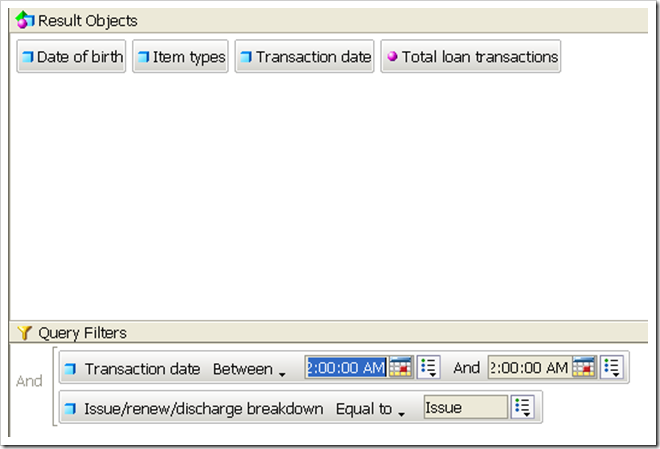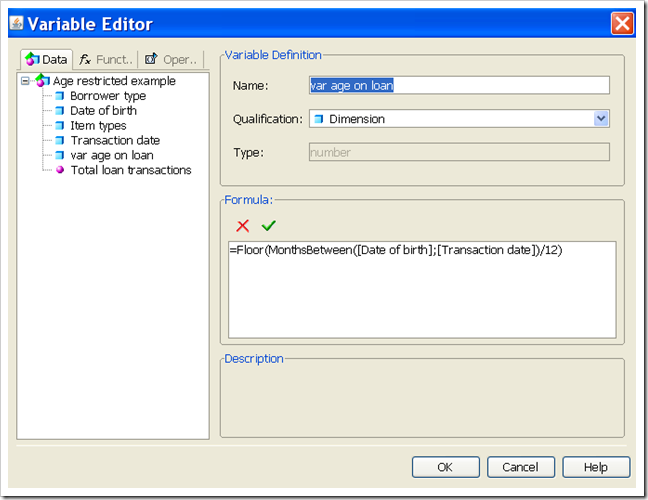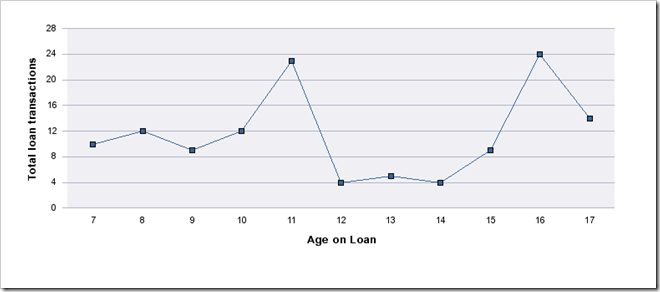Age restricted DVDs
Public libraries self-issuing DVDs or academic libraries self-issuing material available to (say) postgraduates and staff only share a problem with on-line retailers: how do you establish the right of the individual to check the item out?
Although in theory, libraries are in a stronger position than on-line retailers because they have registration data about their borrowers, in practice this area is potentially affected by a number of issues ranging from data accuracy and completeness to the functionality of the physical terminals.
Regardless of operational practice, one need which may arise is the reporting of exceptions: that is to understand how big the problem is. This scenario assumes that borrower date of birth data are accurate and that there is an item type of “Adult DVD”. This will illustrate the principle, although the detail will vary from library to library.
The basic query returns the date of birth, the loan date, the item type and the loan count. The query is filtered on loan date (not least to cut down the refresh time) and also limits the results just to issues:
Once the query has run and has populated a default report, you can then create a variable that returns the age of the borrower at the point that the item was loaned. This is done using the MonthsBetween() function, dividing the result by 12 and using the Floor() function to round down to the nearest year. The whole variable definition looks like this:
There are many ways that the data could be displayed. Here is one example – a chart that displays the number of loans of an adult DVD by age of borrower at the time of the loan for borrowers between 7 and 17:
In theory, Talis Decisions could use external data to look up the British Board of Film Censors (BBFC) details of a DVD, but in practice this is likely to be confounded by lack of consistent identifiers for DVDs, multiple editions of the same DVD and other data issues.
Does anyone have any experience or any views on this look-up approach? If so, please do post a comment





Recent Comments